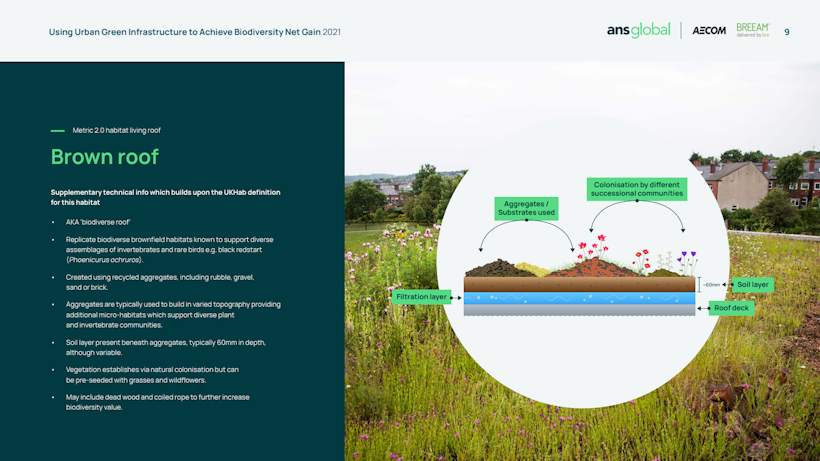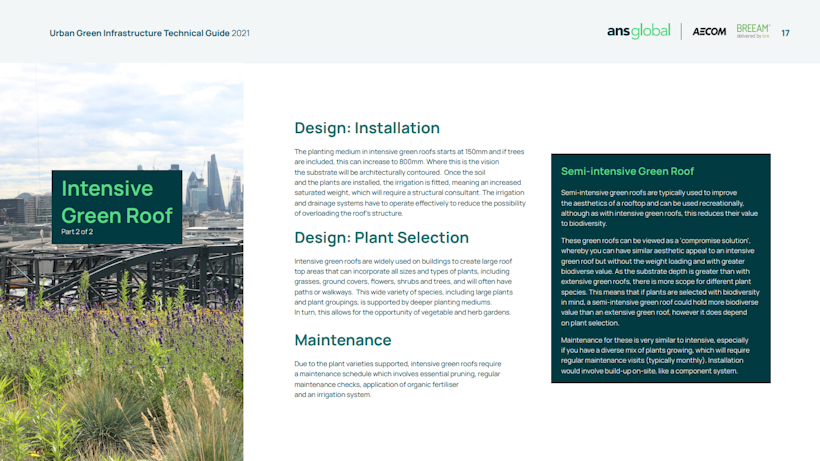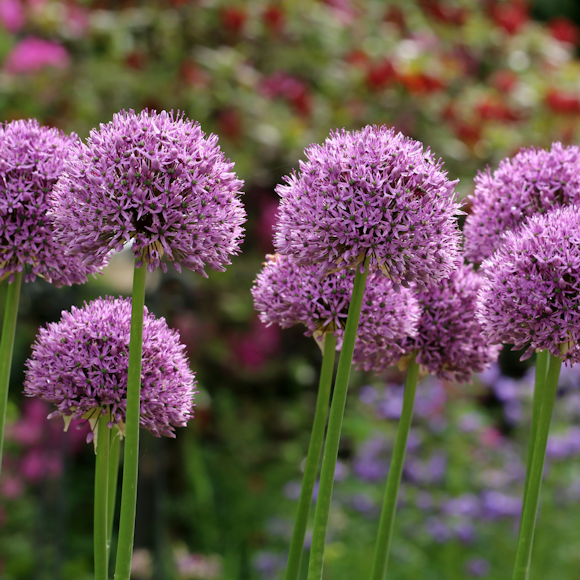Praising their success at combining details around the demands of the BNG (Biodiversity Net Gain) regulation with the technical aspects of integration, Robert Spencer, Global Head of ESG Advisory Services at AECOM based his presentation at the Buildings Pavilion at COP27 around the two guides we created for you - architects, ecologists and engineers – on how to design for the new biodiversity net gain regulation set out by Natural England.
New versions adapted to suit the new Metric 3.1 are coming soon, but in the meantime, we thought this was a good time to re-visit the guides: what they set out to achieve and how they can help you.
It’s split in two:
First up,
1. Using Urban Green Infrastructure to Achieve Biodiversity Net Gain

(Above: Page 9 from the first guide, detailing the Metric 2.0 habitat for a brown roof (or 'biodiverse roof').)
This gives you guidance on how to incorporate urban GI into your developments, and best practice methods when using The Biodiversity Metric to assess how urban GI contributes to achieving BNG.
When integrating urban GI habitats into a design, understanding the differences between habitats can help designers and practitioners select and design the habitat most suitable for the development (the full list of Metric 2.0 urban habitats is provided in Annex A).
Without considering this detail, the biodiversity units for a development may be under or over-estimated, and values such as Time to Target Condition, which is fixed according to habitat condition, may be overlooked. This first guide highlights these differences, discusses how each variable can impact BNG calculations, illustrates how each habitat should be designed to ensure the biodiversity units can be achieved and outlines how each habitat should be assessed within the metric.
Whilst this guidance note outlines the differences urban GI habitats provide in relation to biodiversity net gain it is intended that this guidance note is read in conjunction with the following guide:
2. Urban Green Infrastructure Technical Guide

(Above: Page 17 from the technical guide, detailing the specifics around design and maintenance of an intensive green roof.)
This outlines the technical information related to design, practical installation and maintenance of urban GI systems.
How useful are these guides?
We’ve had quite a bit of feedback from ecologists and architects especially. Here’s what Rachel, an architect at Orms, sent us having used the guides:
“As an architect, I found the technical guide really useful as a reference for early design stages, to ensure we would be allowing sufficient depth for appropriate planting. I also appreciated the advice on the success of each type of infrastructure and the level of detail provided will allow us to have more informed conversations with our landscape architects or planting specialists about achieving biodiversity on our projects.
I will be sharing both guides internally, and pointing design teams to them in the future.”
And in fewer words, but no less impactful, was James Byrne’s (Founder of BeyondWords), post on LinkedIn, sharing these guides:
“This is gold”
We’d agree.
If you have any questions about the guides or on the wider topic of the Biodiversity Net Gain regulation, please get in touch with us at enquiries@ans.global or call us on +44 (0)1243 545818.

